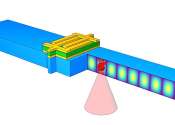Using sound to test devices, control qubits
Acoustic resonators are everywhere. In fact, there is a good chance you're holding one in your hand right now. Most smart phones today use bulk acoustic resonators as radio frequency filters to filter out noise that could ...
Oct 25, 2023
0
55








